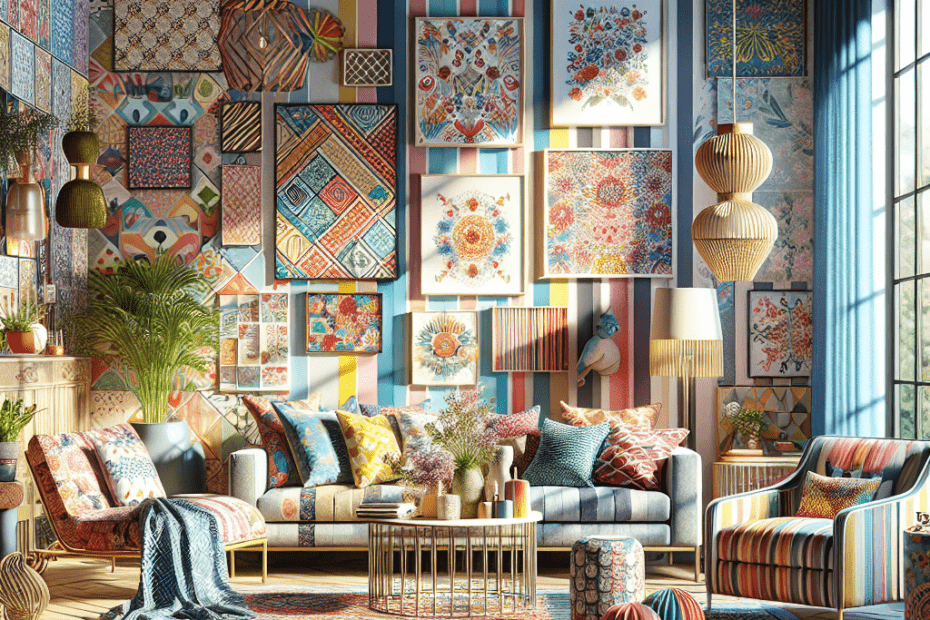“`html
Designing with Patterns to Add Playfulness to a Room
Patterns in design present an opportunity to transform a space from mundane to dynamic. Patterns, whether subtle or bold, can add a playful touch to any room, creating visual interest and enhancing the overall aesthetic appeal. Designers frequently leverage this design element to invigorate interiors, ensuring they reflect personality and warmth. According to a Statista survey, 65% of home renovators consider patterns vital in achieving a unique room ambiance, underscoring their growing popularity in interior design. As more individuals seek to create lively and inviting spaces, the application of patterns has become integral in contemporary design.
Why Use Patterns in Design?
Patterns offer versatility to designers, serving as a tool to either unite or divide space. Patterns contribute to a room’s story by weaving various elements together, from wallpaper and textiles to rugs and art. Some benefits of incorporating patterns include:
- Visual Interest: Patterns can instantly draw attention, creating focal points that captivate the eyes.
- Emotion and Mood: Certain patterns evoke emotions, contributing to a room’s atmosphere. For instance, floral prints may suggest serenity, while geometric shapes can add energy.
- Texture and Depth: Patterns can simulate texture, adding depth and dimension to flat surfaces.
Listening to Space and Pattern
When deciding on patterns, they consider the room’s purpose and size. In small spaces, subtle patterns can create a sense of openness, while larger spaces might benefit from bold prints. They often weigh how colors and styles interact within the pattern to ensure harmony. Designers also recommend starting with small accents, such as patterned pillows or curtains, for those hesitant about committing to larger pattern applications.
| Room Size | Recommended Patterns |
|---|---|
| Small Rooms | Subtle, Minimal Patterns |
| Large Rooms | Bold, Dramatic Patterns |
Patterns Across Different Elements
Exploration with patterns is not limited to walls; they apply them across multiple design elements:
- Walls: Opt for patterned wallpapers to create an accent wall or use stencils for a more customized look.
- Flooring: Rugs and floor tiles with interesting patterns introduce style without permanent commitment.
- Furniture: Upholstery patterns can invigorate sofas and chairs, providing an opportunity to incorporate trend and tradition.
- Accessories: Throws, pillows, and art can provide an easy and cost-effective way to experiment with different patterns.
Color Play in Patterns
Color is an essential consideration when choosing patterns, providing another layer of dimension and endless personalization. Neutral-toned patterns often serve as a backdrop to brighter accents, whereas colorful patterns can take center stage. They often consult color theory to match or contrast patterns effectively, creating an environment that is dynamic yet cohesive.
Key Takeaways
- Patterns in design are vital for creating playful and inviting spaces.
- They add visual interest, texture, and emotion to a room.
- Versatility across walls, flooring, furniture, and accessories widens their use.
- Color choices in patterns are crucial to maintaining balance and enhancing design.
FAQ
- Q: How do patterns add playfulness to a room?
A: Patterns introduce dynamic visual elements that can enhance mood and atmosphere, making a room feel more lively. - Q: Can I use patterns in a small room?
A: Yes, using subtle patterns can create the illusion of a larger space without overwhelming it. - Q: What if I am unsure about using bold patterns?
A: Start with small accents like pillows or rugs, allowing you to experiment without a major commitment. - Q: Are patterns suitable for both traditional and modern designs?
A: Absolutely, patterns can be tailored to complement any design style, whether it’s traditional or contemporary. - Q: How do I choose the right color for a pattern?
A: They consider the room’s existing color palette and desired mood, balancing boldness with harmony.
“`
